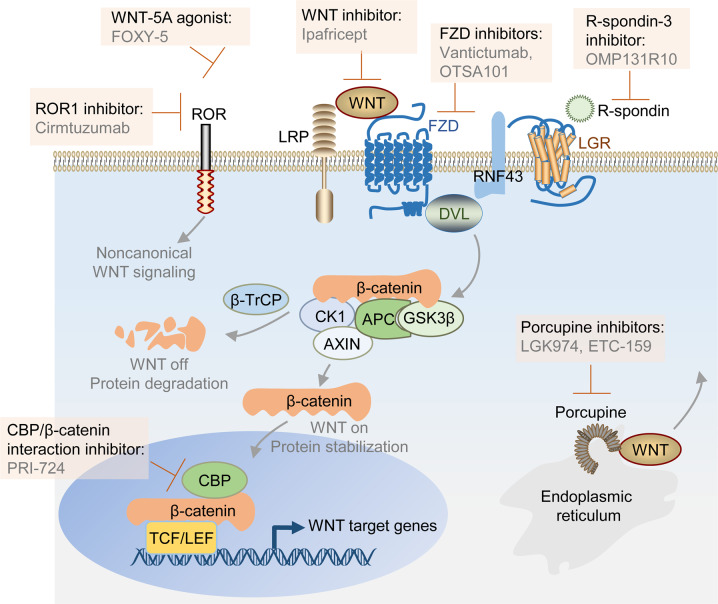Fig. 7.
The WNT signaling pathway and targeting therapeutic strategies. WNT ligands bind to FZD and LRP5/6 receptors to phosphorylate DVL, and then phosphorylated DVL recruits the destruction complex to the plasma membrane. This inhibits GSK3 and prevents phosphorylation of β-catenin, resulting in the stabilization and accumulation of β-catenin proteins to form a complex with TCF/LEF in the nucleus, thereby activating the transcription of downstream target genes. There are several targeting strategies that prevent the activation of WNT signaling, such as targeting WNT ligands and their receptors, inhibiting the WNT secretion by targeting porcupine, and disrupting the interaction between CBP and β-catenin

